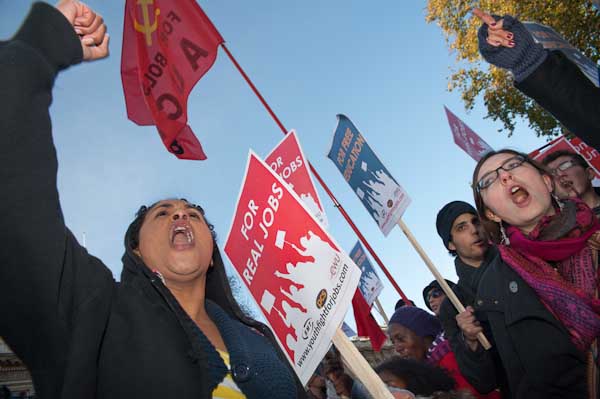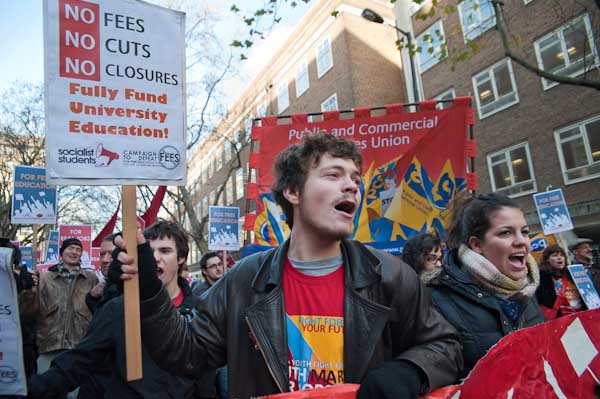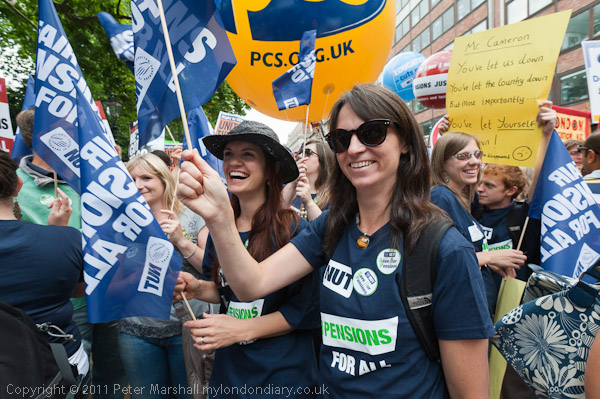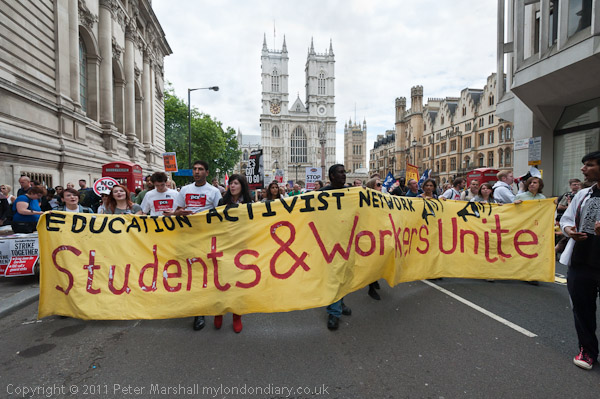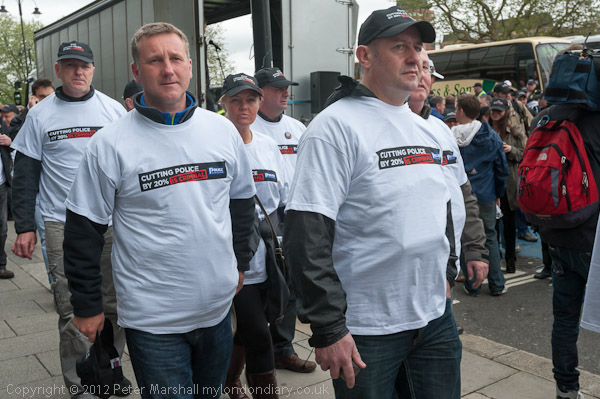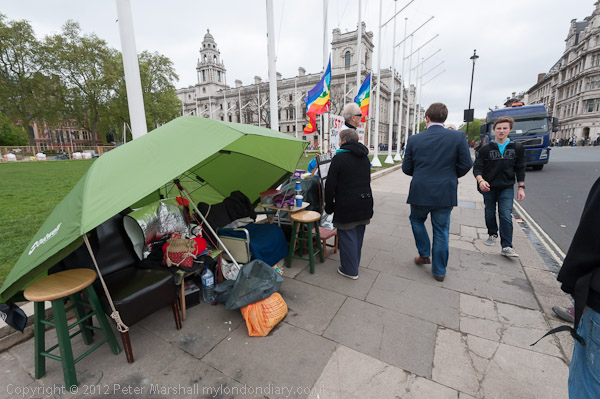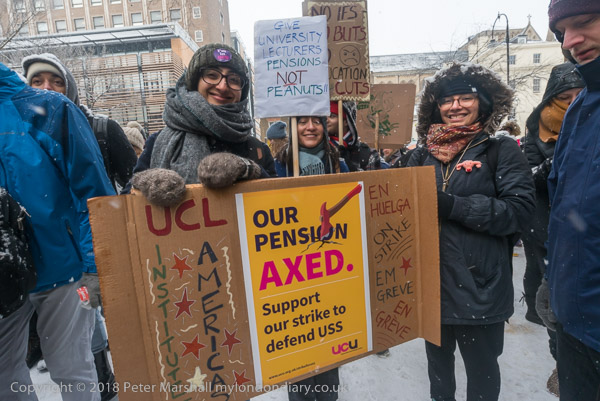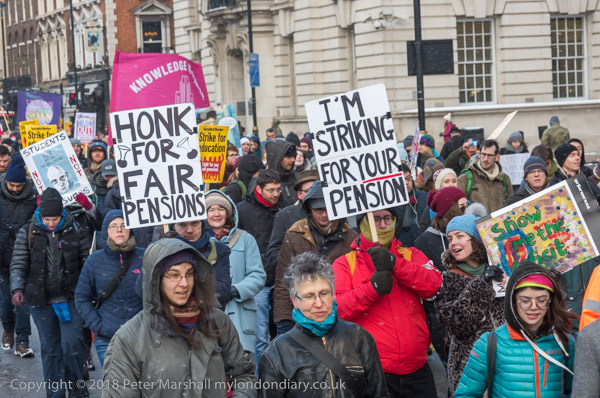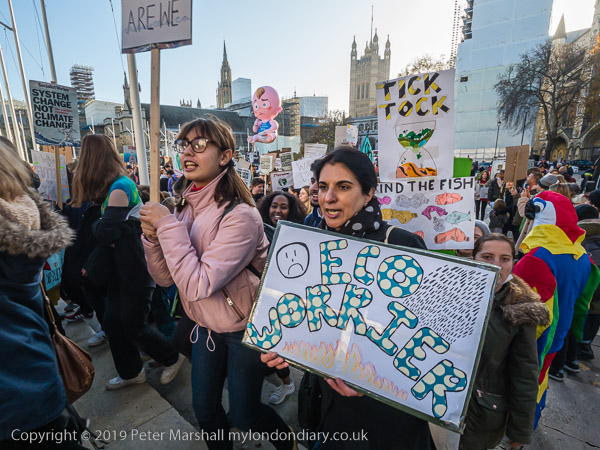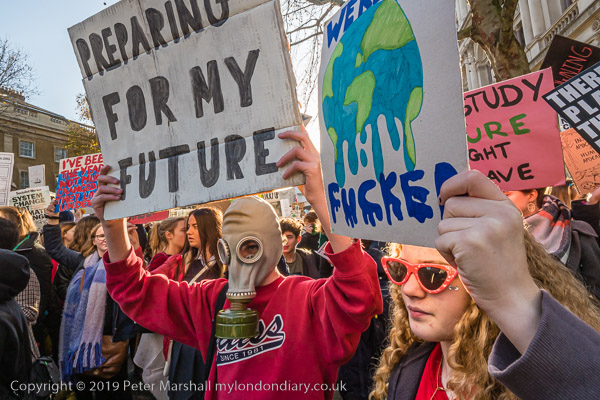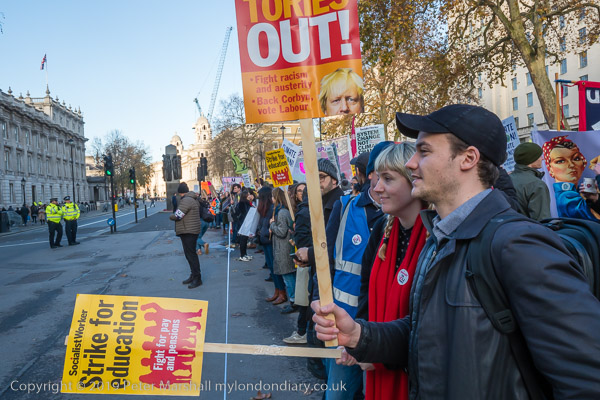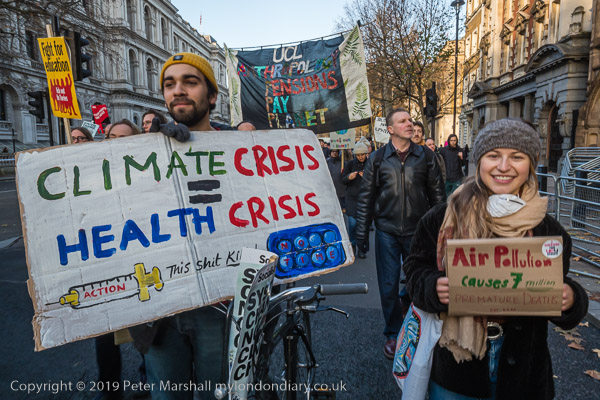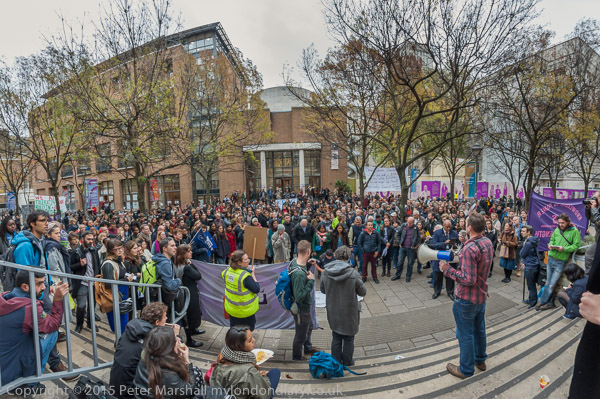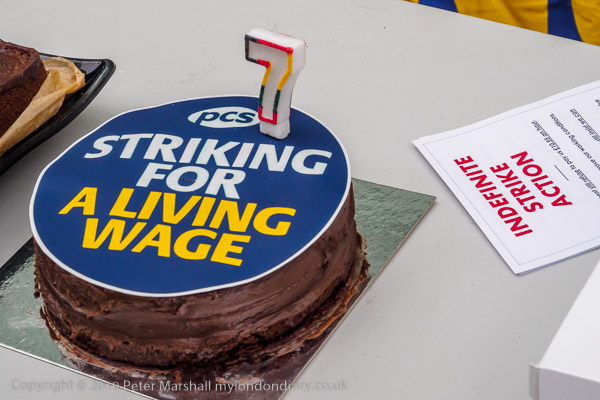Cabin Crew, Education, Living Wage & Light Up the Night: Saturday 20th March 2010 was an unusual day for me, including protests in two parts of London I seldom visit, Hatton and Hampstead. It was also the start of a campaign on Oxford Street to get the London Living Wage for shop workers and there was a march to Downing Street against education cuts.
BA Cabin Crew at Heathrow – Hatton

BA cabin crew on the first day of their 2-day strike at Heathrow held a rally outside Bedfont Football Club a short distance from Hatton Cross, where several hundred strikers came to listen to speakers, including Len McCluskey, Unite assistant general secretary, and show their determination to fight management plans to downgrade their conditions and make BA into a cut-price airline. Others kept up their pickets at gates around the airport.

BA management under CEO Willie Walsh had refused to come to an agreement with the union, BASSA, and had threatened any workers who spoke at the meeting or appeared in media interviews with dismissal. So none of the strikers spoke at the meeting, but there was thunderous applause when speakers including local MP John McDonnell criticised BA management.

I photographed the picket at Hatton Cross on my way to catch the Piccadilly line into central London.
More at BA Cabin Crew at Heathrow.
March Against Education Cuts

A couple of thousand teachers and students met outside Kings College in Strand to call for the reversal of planned education cuts which they say abandon a generation of students and will damage our economic recovery.

Police had insisted that they march on the pavement, but the numbers and the banners made this impossible and after a hundred yards or so they moved onto the street. At Downing Street they filled both carriageways for several minutes with a short token sit-down before police and stewards persuaded everyone to move to one side of the road, but the crowd was still a little large for the space available and there seemed to be a few dangerous incidents – including a rather uncontrolled police horse – but fortunately no injuries as police appeared keen to get a lane of traffic moving past without due regard for public safety.

As speakers at the rally said, Labour had come into power on the mantra ‘Education, Education, Education‘ but 12 years later were proposing the largest cuts in education funding for a generation or more, estimated to lead to the loss of more than 20,000 jobs in Further Education, Higher Education and Adult Education. They will disproportionately affect the poorer and more disadvantaged in our society, in particular immigrants and young people who are unemployed or lacking in qualifications.

As Jenny Sutton, branch secretary of the UCU at the College of North East London pointed out the proposed cuts of £1.1 billion on education contrasted with the £21 billion spent on wars in Iraq and Afghanistan and the £500 billion given to the banks, one of which, the 84% publicly owned RBS is now paying out £1.3 billion in bonuses.

In protest Sutton was standing against the then Education Minister David Lammy in the May 2010 election. Lammy kept his seat and she lost her deposit, but the election put a Tory-led coalition into power. Education suffered even worse in the following years.
London Living Wage Launch in Oxford St

The London Living Wage campaign began in 2001 and has had the support of all London mayors since. Calculated annually by the Greater London Authority it takes into account the higher living costs in London, and Living Wage employers also have to provide fair employment conditions including holiday and sick pay and allowing employees to belong to a trade union.

Although some of London’s larger employers have adopted the London Living Wage, the retail sector, one of the most profitable areas of business in London, still had many of many of its workers struggling on wages below this level.

London Citizens, a grassroots charity working for social, economic and environmental justice , has led the campaign for a London Living Wage, and held a training session for its members before coming to Oxford Circus. Here they took advantage of the recently introduced diagonal crossing system to cross and recross several times with their banners before going off in smaller groups to continue the campaign inside the larger stores on Oxford Street.

They intended to give letters to all the general managers of shops on the street inviting them to meet with London Citizens to discuss the Living Wage.
London Living Wage – Oxford St
Light Up the Night in Hampstead

‘The Commons‘ candidate for the Hampstead and Kilburn constituency Tamsin Omond had organised a ‘Light Up The Night‘ candlelit march to show community solidarity against violent crime and make the streets safe for women at night.

Around 30 people, mainly women, turned up outside the Hollybush pub in Hampstead for the march, where there was a short speech by Sam Roddick, noted for her campaigning on issues related to human rights, feminism, pornography and for taking Fair Trade into hitherto unexplored areas through Coco De Mer, her Covent Garden ‘erotic emporium.

It was a wet and windy night and it was hard to to keep the candles alight as the marchers made their way down the hill from Hampstead and the streets were emptier than usual.

‘The Commons’ campaign hoped to reach people who are fed up with politicians and appeal to ordinary people, many of whom, like Roddick have never bothered with voting because they felt it made no difference. But it made little progress. The election was closely fought with Labour’s Glenda Jackson gaining a narrow victory by 42 votes over the Tory candidate, but Omond was over 17,000 votes behind both of them with only 123 votes and the turnout was low.
More at Light Up the Night in Hampstead.
Flickr – Facebook – My London Diary – Hull Photos – Lea Valley – Paris
London’s Industrial Heritage – London Photos
All photographs on this page are copyright © Peter Marshall.
Contact me to buy prints or licence to reproduce.














